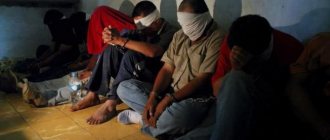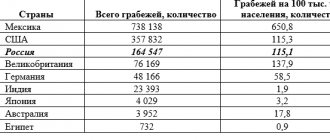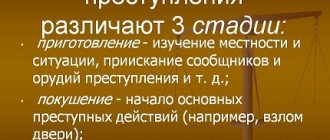New edition of Art. 117 of the Criminal Code of the Russian Federation
1. Infliction of physical or mental suffering through systematic beatings or other violent actions, if this did not entail the consequences specified in Articles 111 and 112 of this Code, -
shall be punishable by restriction of freedom for a term of up to three years, or forced labor for a term of up to three years, or imprisonment for the same term.
2. The same act committed:
a) in relation to two or more persons;
b) in relation to a person or his relatives in connection with the performance of official activities by this person or the performance of public duty;
c) in relation to a woman who is known to the perpetrator to be pregnant;
d) in relation to a person who is known to be a minor or a person who is known to be in a helpless state or in financial or other dependence on the offender, as well as a person who has been kidnapped or taken as a hostage;
e) using torture;
f) by a group of persons, a group of persons by prior conspiracy or an organized group;
g) for hire;
h) for reasons of political, ideological, racial, national or religious hatred or enmity, or for reasons of hatred or enmity towards any social group, -
shall be punished by imprisonment for a term of three to seven years.
Note. In this article and other articles of this Code, torture is understood as the infliction of physical or mental suffering for the purpose of forcing a person to testify or take other actions contrary to the will of a person, as well as for the purpose of punishment or other purposes.
What is child torture and can you be punished for any spanking?
In fact, it is possible, but not for everyone. In order for a “slap” to be qualified as torture, it must, at a minimum, be used repeatedly, and also be qualified as beating. That is, a one-time action will not bother the guardianship specialists.
But if it is established that a “loving” parent uses beatings or moral humiliation as a method of education, this may well be qualified as Art. 117 of the Criminal Code – actually, torture.
The key word here is “systematically” , because strictly speaking, for an act to fall under the mentioned article, assault may not be necessary at all - this also includes the moral suffering caused.
As for the harm, the effect may not be physically expressed, but such an impact was applied to the child repeatedly, at short, short time intervals, and was clearly perceived by him as suffering.
So for those who consider spanking acceptable, it makes sense to think not only about the appropriateness of such an educational technique, but also about its legality.
A crime will be considered committed if all the actions that qualify this particular type of act took place, regardless of what the consequences were - whether the victim reacted to them outwardly completely calmly or whether he had to seek help.
Beatings will be regarded by law enforcement officers as torture of a child if the little one was beaten two or more times - that is, this fact itself clearly falls under the mentioned 117th article of the Criminal Code and is considered to cause both moral and physical harm.
Also - if the adult who let loose his hands did not damage the health of the victim or damaged him to a mild degree.
IMPORTANT! If the aggressor did not calculate his strength and, in the heat of the moment, inflicted at least moderate or even serious harm on the child, then such an act already falls under Art. 111 part 2. paragraph “b” or under Art. 112, part 2, clause "c" of the Criminal Code.
In the language of lawyers, torture of a child is considered to be the systematic use of physical or mental violence against a person under eighteen years of age, if this does not entail the consequences specified in Articles 111 and 112 of the Criminal Code of the Russian Federation.
What should you do if your child is being bullied at school?
Second commentary to Art. 117 of the Criminal Code of the Russian Federation
1. Objective side: causing physical or mental suffering. Methods of this infliction are systematic beatings or other violent actions.
The objective side of this crime covers only the infliction of minor harm to health.
2. Systematic beatings do not mean the number of blows inflicted on the victim, but the repetition of the tort: acts of violence (beatings) continue over a period of time and represent episodes that are independent in design and execution. The sign of systematicity in this crime reflects the significance of a specific life situation and does not have a strict legal meaning. Therefore, the annulment of legal consequences for an offense (assault) for any episode does not affect the assessment of the beatings as systematic.
3. Physical or mental suffering is caused to the victim by other violent acts. The legislator does not specify their content, since the physical or mental experiences of the victim are essential for the elements of torture. The external form of violence is not decisive. Violence can be applied not even to the object of torture (the victim), but to third parties. An example of such torture is violence in the presence of the victim against people close to him with the aim of causing him suffering.
4. The subjective side in the main structure of this crime is characterized by direct intent. The subject of torture is a person who has reached the age of sixteen.
5. Qualified types of torture are provided for in Part 2 of Art. 117 CC. The content of the signs provided for in paragraphs “a”, “b”, “c”, “f”, “g”, “h” of this article coincides with the content of the signs provided for in part 2 of article 105 (see 6 commentary to part second article 105 of the Criminal Code).
6. The use by the perpetrator of the financial or other dependence of the victim (clause “d” of Part 2 of Article 117 of the Criminal Code) in the context of torture is interpreted in a broad sense as a social connection between the perpetrator and the victim. These relations can be regulated by law and be in the nature of legal, official, administrative, and disciplinary relations. The legal (and other status) meaning of dependence has no criminal legal significance: the very nature of the relationship between the perpetrator and the victim is important. An essential feature of dependence is its subjective meaning: the essence of the relationship between the perpetrator and the victim must be understood by both.
7. The use of torture (clause “d”, part 2, article 117 of the Criminal Code) is a method of action. The concept of torture is given in paragraph 11 of the Convention against Torture and Other Cruel, Inhuman or Degrading Treatment or Punishment (ratified by the Presidium of the Supreme Soviet of the USSR on June 26, 1987). The inclusion of the specified qualifying feature in Article 117 of the Criminal Code has an international legal basis.
The concept of torture is formulated in a note to this article.
Corpus delicti
The objective side in this case refers to systematic beatings or moral violence directly related to the suffering of the victim.
- The object is public relations in the field of protecting the human person, life and health, as well as the right to exercise personal rights in relation to one’s own health.
- The subject in this case is a sane person who has reached the age of sixteen, aware of what he is doing and aware of it.
- The subjective side of the act consists of direct intent.
- Specific signs that clearly indicate that torture is taking place are violent actions against a person who is dependent on the aggressor or who is in a state of helplessness.
The qualified composition of an act is formed by its commission:
- in relation to a group of persons;
- against certain individuals or their close relatives on official grounds or due to interracial, national or religious hostility;
- in relation to a pregnant woman (and the aggressor knows that she is pregnant);
- if torture is used;
- for hire.
Torture refers to physical or mental violence used to force the victim to do something against his will - for example, to divulge certain information.
Commentary to Art. 117 Criminal Code
1. The objective side of the crime consists of an act expressed in the form of two alternative actions: systematic beatings (occurring at least three times, multiple blows) or the commission of other violent actions causing physical or mental suffering (prolonged infliction of pain by pinching, cutting, inflicting multiple, including small, injuries with blunt or sharp objects, exposure to thermal factors, prolonged deprivation of food, drink or heat, placing or leaving the victim in conditions harmful to health, other similar actions).
2. Systematic beating is a chain of interrelated actions, united by the common line of behavior of the perpetrator towards the victim and the desire to cause him constant physical or mental suffering. The systematic nature of beatings causes the victim not only physical, but also mental suffering, accompanied by feelings of humiliation, resentment, etc. Therefore, even repeated beatings cannot be considered torture if they were scattered in nature and not united into a system.
3. The health of the victim should not be caused to severe or moderate harm. Otherwise, the act is covered by Art. 111 or 112 of the Criminal Code (qualification is possible under clause “b”, part 2 of Article 111, clause “c”, part 2 of Article 112 of the Criminal Code) and additional qualifications under Art. 117 of the Criminal Code does not require it.
4. Infliction of mental suffering through systematic humiliation of human dignity or through threats is not considered torture. In appropriate cases, these actions may form elements of other crimes against the person (Articles 119, 130 of the Criminal Code).
5. The crime is considered completed from the moment the socially dangerous act is committed and the onset of socially dangerous consequences (for example, in the form of minor harm to health) is not required.
6. Financial or other dependence (clause “d” of Part 2 of Article 117 of the Criminal Code) means the dependence of the offender on the person who is dependent on him, lives in his living space without having his own, etc. Another type of dependence includes, for example, official dependence, based on subordination to the person responsible for the work of the victim (the worker to the head of the workshop, and that to the director of the plant, etc.). Such dependence can arise in a variety of cases (for example, dependence of a student on a teacher, a witness or defendant on an investigator, etc.).
7. The concept of torture (clause “d”, part 2 of article 117 of the Criminal Code) is disclosed in the note to art. 117 CC. In relation to Art. 117 of the Criminal Code, this concept should be interpreted restrictively: if physical or moral suffering is caused in order to compel testimony, then criminal liability will arise under Art. 302 or 309 of the Criminal Code.
Distinguishing from other types of child abuse
Sometimes they confuse torture and beatings (Article 116 of the Criminal Code). Indeed, the similarity is that both acts describe violent physical actions.
What makes torture different is that it is systematic – that is, when the victim is beaten at least twice in a short period of time, that is, for the victim it is something permanent. and how it is perceived also play a role
Other nuances are also important, due to which it would seem that even actions that are obviously suitable in composition for the article being described will not always be qualified as such.
Thus, one or even several episodes of repeated violence, both physical and moral, will not be considered torture, if the statute of limitations has already expired, or measures of at least administrative liability have already been applied to the guilty person and the resolutions prescribing such measures are still in force.
It will also not be considered bullying if the child was beaten, even if not just once, but over large time intervals (this point is controversial and there are specific cases where judges named a specific period - from several months to a year).
Commentary on Article 117 of the Criminal Code of the Russian Federation
1. The crime is described in the law using negative and positive characteristics. Yes, comment. article applies if the act described in it did not entail the consequences specified in art. 111 and 112. This means that this article covers the infliction of minor harm to health by torture, and in this case additional qualifications under Art. 115 is not required. If the act resulted in intentionally caused serious or moderate harm to health, then, on the contrary, Art. 117. In this case, torture is considered as a method of causing such harm and a qualifying circumstance (clause “c” of Part 2 of Article 112).
2. Objective signs specified in Art. 117, characterize the objective side of torture, which consists of systematic beatings or other violent actions that cause physical or mental suffering.
3. Comparison of the dispositions of Art. 116 and 117 shows that the methods of action in the acts described therein are similar. They are: a) beatings; b) other violent actions. The difference is that torture is expressed in systematic beatings. In this case, not only the formal, quantitative characteristic (how many times) is important, but also the intensity of the impact on the victim, the latter’s perception of multiple acts as something incessant, continuous, permanent. Because of this, such acts should not be significantly distant from each other in time.
4. Other violent actions as the second method of torture textually coincide with those named as part of beatings (Article 116). However, their content in Art. 116 and 117 are not equivalent. When tortured, they mean other violent actions (in addition to systematic beatings), such as: prolonged infliction of pain (pinching, cutting, etc.), infliction of multiple injuries (including small ones, with blunt or sharp objects), exposure to thermal factors (for example, burning with a hot iron), other similar actions, including prolonged deprivation of water, food, heat, hanging upside down, flogging, etc. As you can see, other violent actions during torture in quantitative and qualitative terms (repetition, duration) differ markedly from those specified in Art. 116.
5. The second part, constituting the objective side of torture, is physical or mental suffering, which must be causally caused by systematic beatings or other violent actions, and arise from them. Torture is characterized by the suffering of the victim, i.e. physical and mental experiences.
6. Unlike one-time physical pain (Article 116), suffering as a human condition has an extension over time, since beatings are inflicted systematically, renewing, reinforcing and intensifying experiences; other violent actions also imply not the simultaneity of violence, but repetition and some extent of it, duration.
For example, M., in response to his wife’s refusal to give money for vodka, tied her to the bed and for two hours asked her where she hid the money: he hit her with his hands, hit her head on the headboard of the bed, burned her face with a burning cigarette, urinated on her, pulled her hair, imitated strangling her with a rope, put a plastic bag on her head, etc. The victim experienced not only physical, but also mental suffering (in particular, when simulating deprivation of life).
7. The subjective side of torture is expressed in direct intent. The perpetrator carries out violent acts, realizing that they cause physical or mental suffering to the victim, and desires this. The Plenum of the Supreme Court of the RSFSR came to the same conclusion in paragraph 14 of Resolution No. 4.
8. Unlike Art. 113 of the Criminal Code of the Russian Federation of the RSFSR in the Criminal Code of the Russian Federation the penalties for torture are differentiated. In part 2 comments. Article provides for a more severe sanction for causing suffering by violent actions: a) in relation to two or more persons; b) in relation to a person or his relatives in connection with the performance of official activities by this person or the performance of public duty; c) in relation to a woman who is known to the perpetrator to be pregnant; d) in relation to a person known to be a minor or a person known to be in a helpless state or financially or otherwise dependent on him, as well as a person who has been kidnapped or taken as a hostage; e) using torture; f) by a group of persons, a group of persons by prior conspiracy or an organized group; g) for hire; h) based on national, racial, religious hatred or enmity.
The vast majority of the above qualifying circumstances coincide with those discussed above when analyzing the qualified elements of murder (Part 2 of Article 105), intentional infliction of grave (Parts 2 and 3 of Article 111) and moderate harm (Part 2 of Article 112) harm to health.
9. The content of the circumstance provided for in paragraph “g” of Part 2 has been expanded. A minor, whose torture entails increased punishment, is understood to be a person who has not reached the age of 18 at the time of torture. To enhance liability, it is necessary to establish whether the perpetrator knew, or whether he knew, that the person being tortured had not reached the age of majority.
10. The financial or other dependence of the victim on the perpetrator limits the person’s ability to resist the assault and facilitates the commission of torture, which is recognized by the perpetrator. Financial dependence is usually understood as a situation in which the victim is fully or partially dependent on the offender, lives in his living space, etc. Other means official dependence, as well as that which stems from family or marital relations, is based on law or contract (for example, dependence on a guardian and trustee, the accused on an investigator, etc.). In all cases, the dependence must be significant, i.e. capable of seriously complicating or suppressing the victim’s will to resist.
11. The punishment is also enhanced by the torture of a person kidnapped (Article 126) or taken as a hostage (Article 206). In such cases, we are talking about a real set of crimes and the actions of the perpetrator must be qualified in addition to paragraph “g” of Part 2 of Art. 117 also under Art. 126 or 206.
12. A specific qualifying circumstance of torture is the use of torture. The concept of torture is contained in the note. to comment articles.
In relation to torture, torture means that the perpetrator commits violent acts (multiple or prolonged), causing physical or mental suffering to the victim in order to force the latter to give out information or confess (where the money is, whether adultery took place, etc.).
13. The crime provided for in Part 1 belongs to the category of moderate gravity, and Part 2 - to serious crimes.








